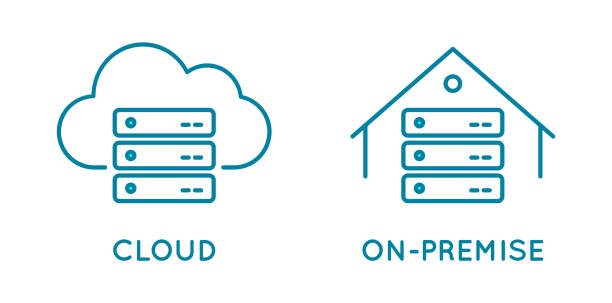In today’s fast-paced digital world, businesses face a critical decision: should they adopt cloud-based solutions or stick with traditional on-premise systems? Both options have their benefits and challenges, and understanding them is key to making the right choice for your business.
What Are Cloud Solutions?
Cloud solutions are services hosted on the internet rather than on local servers. This means your business can access applications, data, and resources online from anywhere, at any time. Examples include Google Workspace, Microsoft 365, and cloud storage services like Dropbox or AWS.
Advantages of Cloud Solutions
- Flexibility and Accessibility
Cloud platforms allow employees to work remotely, access data on-the-go, and collaborate in real time. - Cost-Effectiveness
Since cloud services are subscription-based, businesses can avoid the high upfront costs of purchasing hardware and software licenses. - Scalability
Cloud systems can easily scale as your business grows, whether you need more storage, more users, or additional applications. - Automatic Updates and Maintenance
Service providers handle updates and maintenance, reducing the burden on your IT team.
Challenges of Cloud Solutions
- Dependence on Internet Connectivity: Without a stable internet connection, access to cloud services can be limited.
- Security Concerns: While cloud providers invest heavily in security, storing sensitive data online may raise compliance concerns for some industries.
What Are On-Premise Solutions?
On-premise solutions are installed and run locally on your company’s own servers and computers. This traditional model gives your business full control over its IT infrastructure.
Advantages of On-Premise Solutions
- Complete Control
Businesses have full authority over their data, software, and security protocols. - Enhanced Security for Sensitive Data
On-premise systems can be more secure for highly regulated industries where storing data online might pose risks. - Customization
On-premise software can be tailored specifically to your business processes and requirements.
Challenges of On-Premise Solutions
- High Initial Costs: Purchasing servers, software licenses, and hardware can be expensive.
- Maintenance and Upgrades: Your IT team is responsible for maintaining the infrastructure and applying updates, which can be time-consuming and costly.
- Limited Remote Access: Accessing data outside the office may require complex VPN setups or remote desktop solutions.
Key Factors to Consider
Choosing between cloud and on-premise solutions depends on several factors:
- Business Size and Growth Plans
Startups and small businesses may benefit more from cloud solutions due to lower upfront costs and scalability. Large enterprises with complex operations may prefer on-premise systems for control and customization. - Budget
Cloud solutions offer predictable subscription fees, while on-premise systems require significant upfront investment. - Data Security and Compliance
If your business handles sensitive data, regulatory compliance may influence your choice. Certain industries may require on-premise solutions for full control over data storage and security. - IT Expertise
Cloud solutions reduce the need for in-house IT management, whereas on-premise systems require skilled IT personnel for maintenance and troubleshooting.
Hybrid Solutions: The Best of Both Worlds
Many businesses are now adopting hybrid approaches, combining cloud and on-premise systems. This allows companies to store critical data on-premise while leveraging cloud applications for collaboration and flexibility. A hybrid model can offer both security and scalability.
Conclusion
Both cloud and on-premise solutions have their unique advantages. The right choice depends on your business size, budget, security needs, and growth plans. Cloud solutions are ideal for flexibility, scalability, and cost-efficiency, while on-premise systems excel in control, customization, and security. Evaluating your business goals carefully will help you make the decision that aligns best with your long-term strategy.

